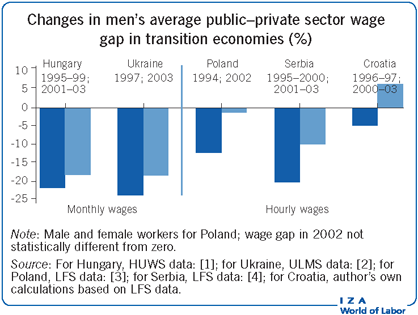Elevator pitch
Examining the implications of changes in public sector wage-setting arrangements due to privatization is a relatively new area of economics research, with few studies having analyzed the effects of public sector restructuring on relative wages in developed countries. There is, however, a growing empirical literature that measures the effects of transitioning from central planning to market-based systems on public–private sector wage differentials. Policymakers can learn from this evidence about the ways in which ownership transformation affects the distribution of wages in both the public and private employment sectors.
Key findings
Pros
The transition from centralized to market-based wage-setting can be viewed as a natural experiment that may help policymakers better understand and adjust wage-setting mechanisms in the public sector.
The public sector wage penalty tends to decline during transition, whereas wage inequality between high- and low-educated workers increases.
Accounting for sectoral differences in worker and job characteristics across the wage distribution allows policymakers to provide workers with effective incentives.
Cons
The start of transition revealed pronounced public sector wage compression, with lower wages than in the private sector, especially for the highly educated.
Public reforms that are focused on average wages may create a premium for workers at the bottom of the wage distribution, and a penalty for those at the top, potentially straining public finances and adversely affecting performance and turnover of highly educated workers.
Cross-country comparisons of public–private wage differentials are difficult to make due to differences in sector definitions, sample selection, and the availability of data.
